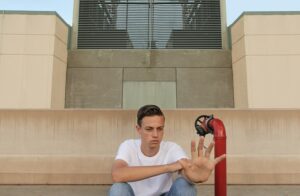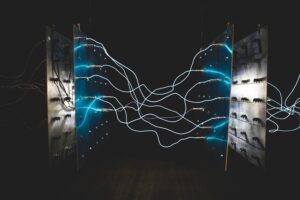“Secure your safety belt first.
Infuse exercises that involve connectedness
Let everyone play a role.
Embrace questions
Practice the art of listening.”
Category: Caring adult
May 22
5 ways to build and maintain virtual classroom sense of community
May 11
“Everything will be okay in the end. If it’s not okay, it’s not the end.”John Lennon
Helping students cope with uncertainty: advice from psychologist
1. feeling distressed about being unable to predict what will happen is entirely normal
2. put things in perspective
3. “Everything will be okay in the end. If it’s not okay, it’s not the end.”
May 09
Many students who were chronically absent when school was in are vulnerable to loss of learning when school is closed due to COVID-19
Narrowing the equity gap includes:
examining access to digital devices
English language learners need documents available in multiple languages
teachers need support to conduct distance learning and connections with students
May 09
Connecting with students even at a distance through the small things helps teachers maintain and build relationships
“These small daily experiences with our students forge a deep bond. We laugh with them. We hug them when they’re sad. We lose our tempers, make mistakes, and make amends. “
May 05
Morning meetings builds connections with students even when it’s asynchronous online: one teacher’s adaptations to home learning
“The biggest challenge we have is helping our students return to school not traumatized by this situation. Their social and emotional health should be our number one goal so they return to us with their spark and love of learning intact. Morning meetings and reflection are the foundations of that social and emotional work.”
May 04
“Students are more likely to complete tasks that they care about”:encouraging student engagement in remote learning
“In all disciplines and at all grade-levels, we need to get students moving, thinking, interacting with family members, creating (off the computer), and making choices. “
May 02
6 reasons why student’s aren’t showing up for virtual learning
“Some students are not connecting because they felt invisible while they were in the physical classroom, so they feel that they will not be missed in the virtual one.”
Apr 29
Practical suggestions for keeping secondary students connected during COVID-19
“STUDENTS WHO FEEL
CONNECTED TO SCHOOL…
• Have an adult in school, who they
believe knows about them and cares
about them as an individual
• Have a group of peers they interact
with and feel affinity with as a group
– i.e. sports teams, theater crews, clubs,
identity groups, circle of friends” Robert Balfanz, Johns Hopkins
Apr 28
In a time of distance learning, focus on health and meaningful connections
“Targeted and quality outreach toward students and families, particularly those facing economic, health and academic hardships, will lead to more engagement in the shift to distance learning. “You want to make sure your families feel supported, not bothered, in a time of crisis,” Hedy Chang, Attendance Works
Apr 26
Responsive Circles for COVID-19
“the restorative questions card can really be helpful for a teacher or anyone else who wants to organize a responsive talking circle – assuredly a virtual circle – using a tool like Zoom or Google Hangouts.”











